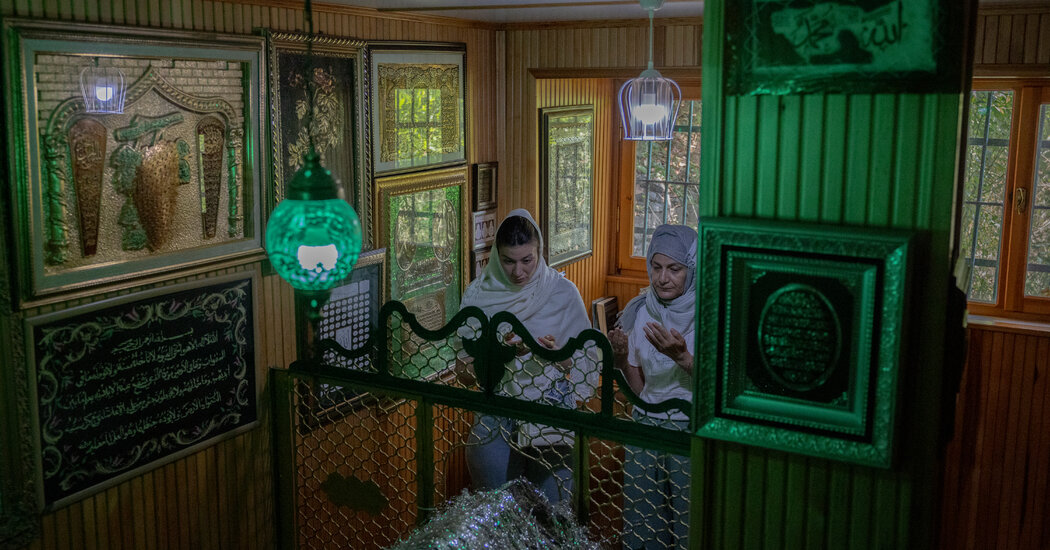Years ago, when her sister was diagnosed with ovarian cancer, Mahire Turk sought divine intervention.
She trekked to a shrine atop a hill overlooking the Bosporus, sat under an ornate dome close to the grave of a Sufi master who died nearly 400 years ago and prayed intensely for her sister to beat the disease.
After chemotherapy, her sister was declared cancer free — and is now expecting a baby, said Ms. Turk, 40, who works in a pharmaceutical warehouse.
So to this day, when worries cloud her mind, Ms. Turk, like many of her compatriots in this ancient, sprawling city of 16 million, visits one of its many shrines to long-dead religious figures to seek a spiritual boost.
“These are the protectors of Istanbul,” Ms. Turk said during a return pilgrimage to the shrine of Aziz Mahmud Hudayi, where she had prayed for her sister. “I am sure that if I pay them a visit, they will protect me, too.”
Centuries of civilization have left Istanbul dotted with such graves. More than just historical relics, many are well-kept, living sites that receive crowds of visitors seeking quiet places to pray, make wishes and unburden themselves from the woes of the modern metropolis.
The shrines combine Islamic devotion, Turkish history and Istanbul folklore. The city’s sailors, for example, have traditionally viewed Aziz Mahmud Hudayi and three other men buried near the Bosporus, which flows through Istanbul, as the waterway’s protectors.
Some of the shrines mark the resting places of documented historical figures. Others are of more dubious historicity, which does not diminish their role in the spiritual life of the city, a role that endures largely unaffected by Turkey’s contemporary political and economic gyrations.
Turkey’s religious authorities have posted signs at some sites to remind visitors that Islam forbids praying to anyone but God. But many of the faithful still seek the intercession of the interred to help them land jobs, buy cars, get healthy, find spouses or have children. And some express a deep affinity for the dead.
“I love him,” Fatma Akyol, a university student in theology, said of Yahya Efendi, a 16th-century Sufi scholar and poet who now rests in a shrine on the southwestern bank of the Bosporus. “I visit him very often.”
Yahya Efendi’s tomb sits under a pistachio-colored dome in an airy room surrounded by the graves of 10 others, including his mother, wife and son. The complex has separate prayer facilities for men and women, both with…
Click Here to Read the Full Original Article at NYT > Travel…
